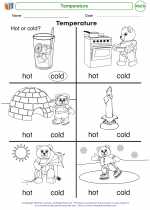Understanding Seconds
In the context of time, a second is a unit of measurement that represents a specific duration. It is the base unit of time in the International System of Units (SI).
Definition
A second is defined as the duration of 9,192,631,770 periods of the radiation corresponding to the transition between two hyperfine levels of the ground state of the cesium-133 atom. This definition was adopted in 1967 and provides a highly accurate and reliable standard for the measurement of time.
Usage
Seconds are commonly used to measure short durations of time, such as the time it takes to complete an activity, the duration of an event, or the intervals between events. They are also used in scientific experiments, engineering calculations, and everyday timekeeping.
Relationship to Other Units
60 seconds make up a minute, and 60 minutes make up an hour. This hierarchical structure allows for the measurement and calculation of longer time intervals.
Notation
Seconds are often abbreviated as "s". For example, a duration of 5 seconds can be written as "5s". In digital time displays, seconds are typically shown after the minutes, separated by a colon. For instance, 2:30:25 represents 2 hours, 30 minutes, and 25 seconds.
Conclusion
Understanding seconds is essential for various aspects of daily life, from managing schedules and appointments to conducting scientific research and technological development.


